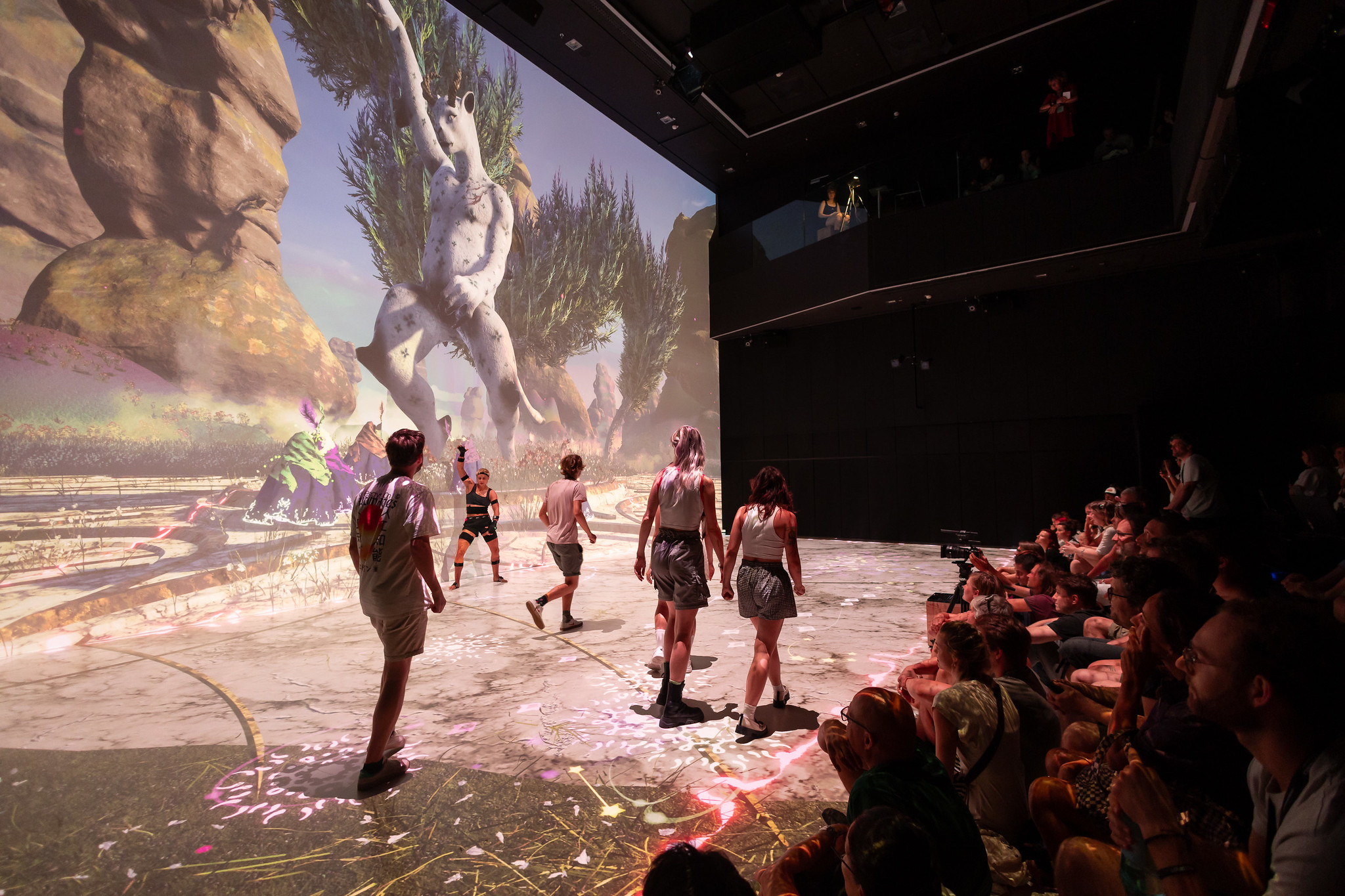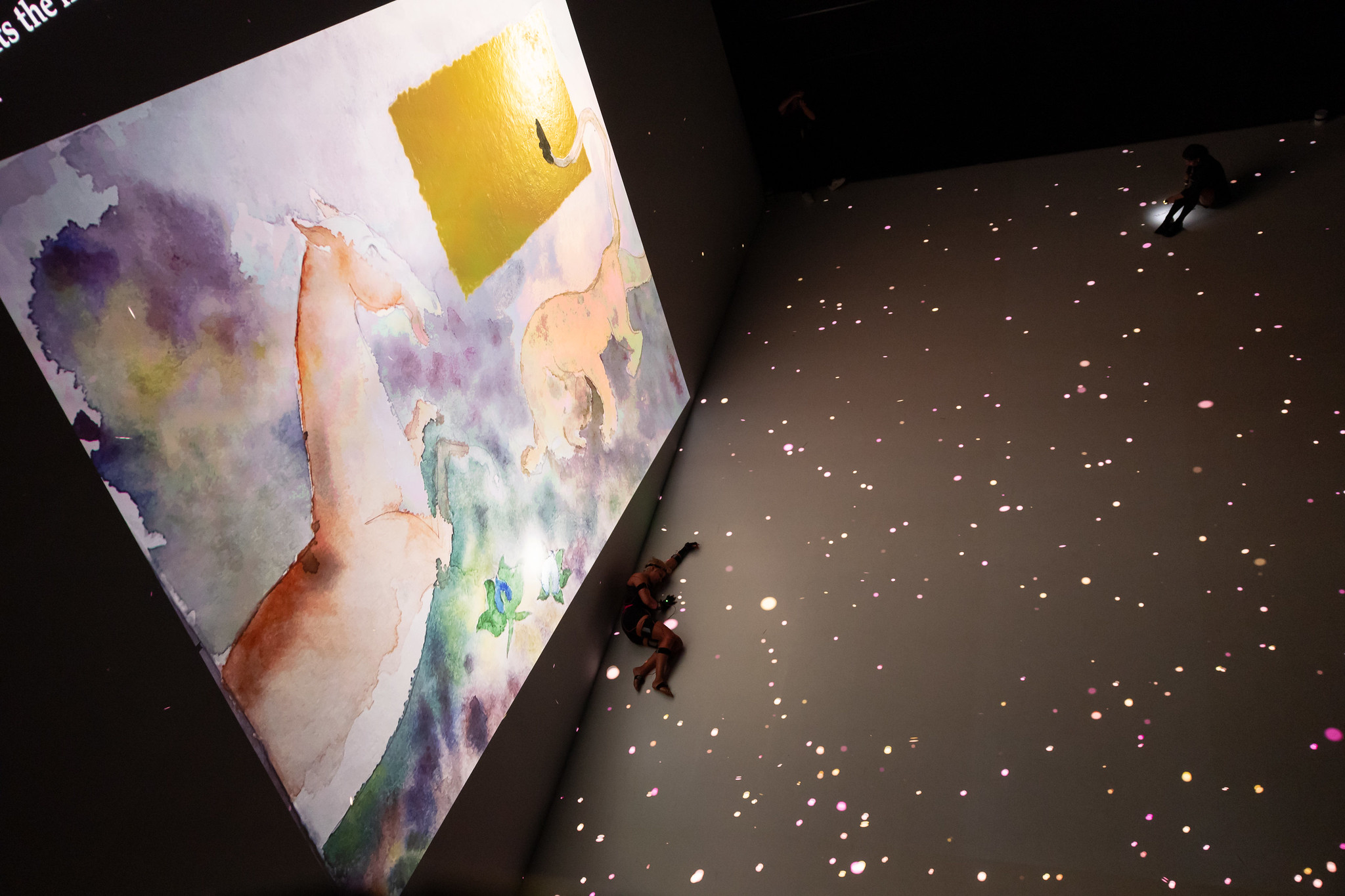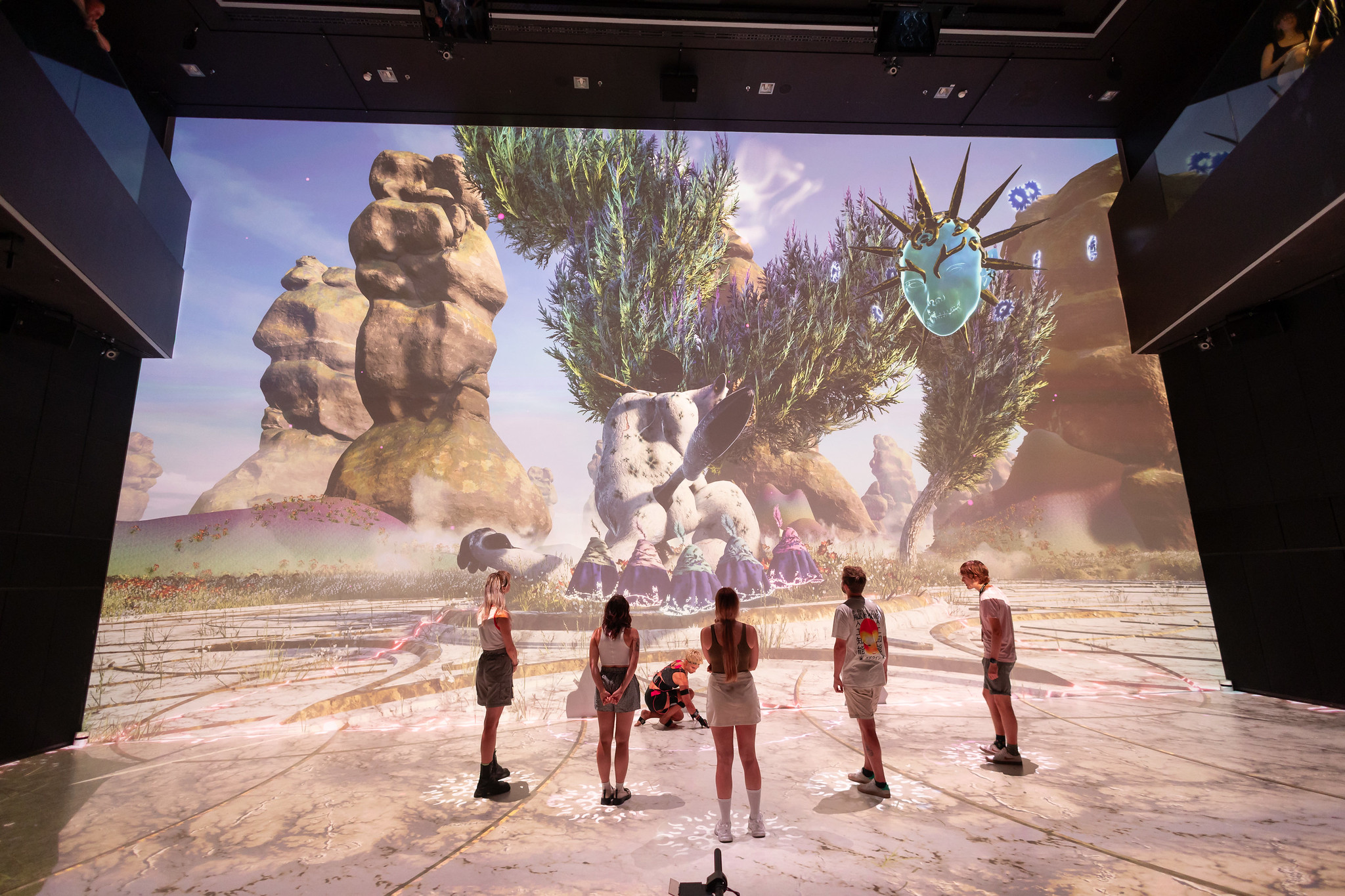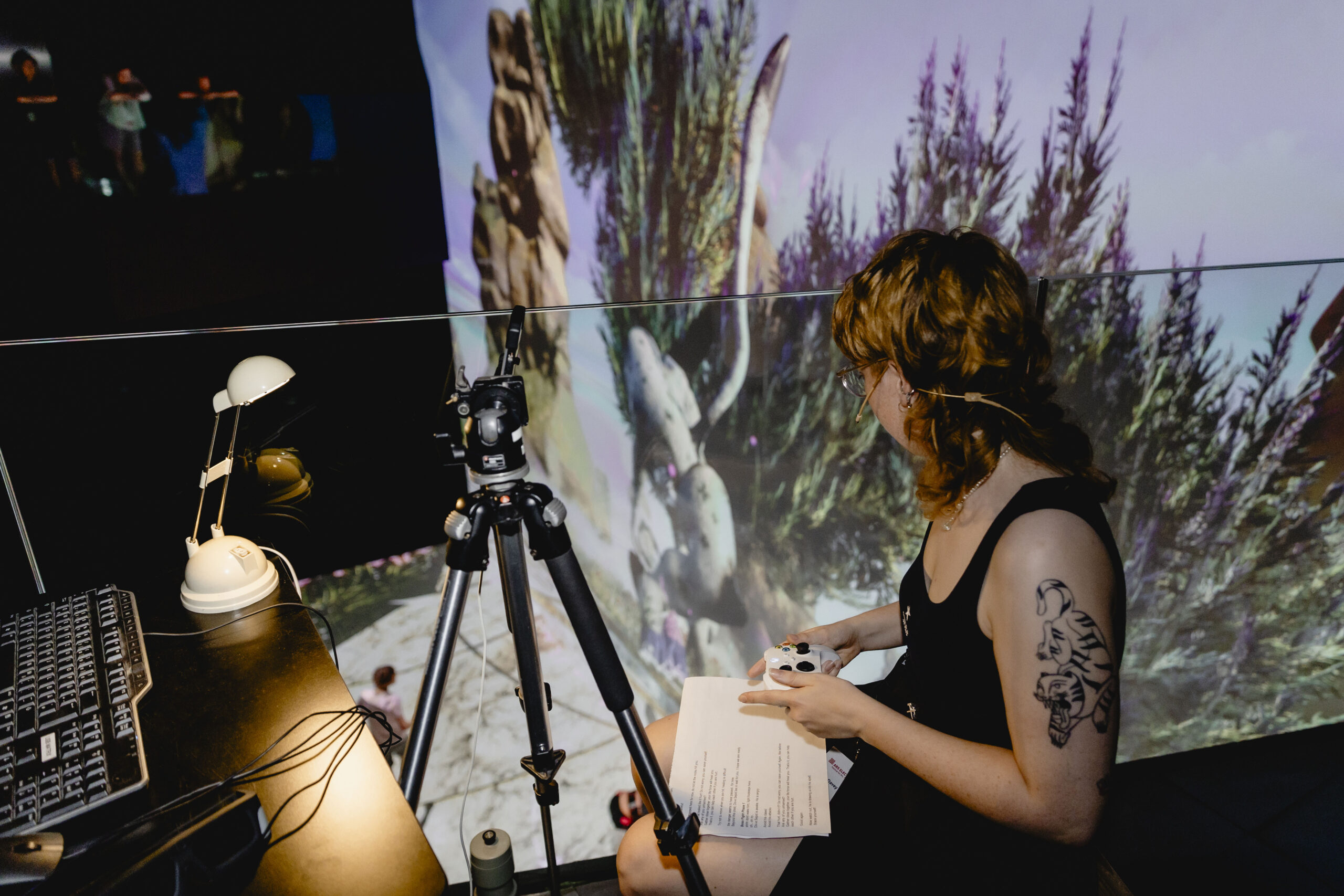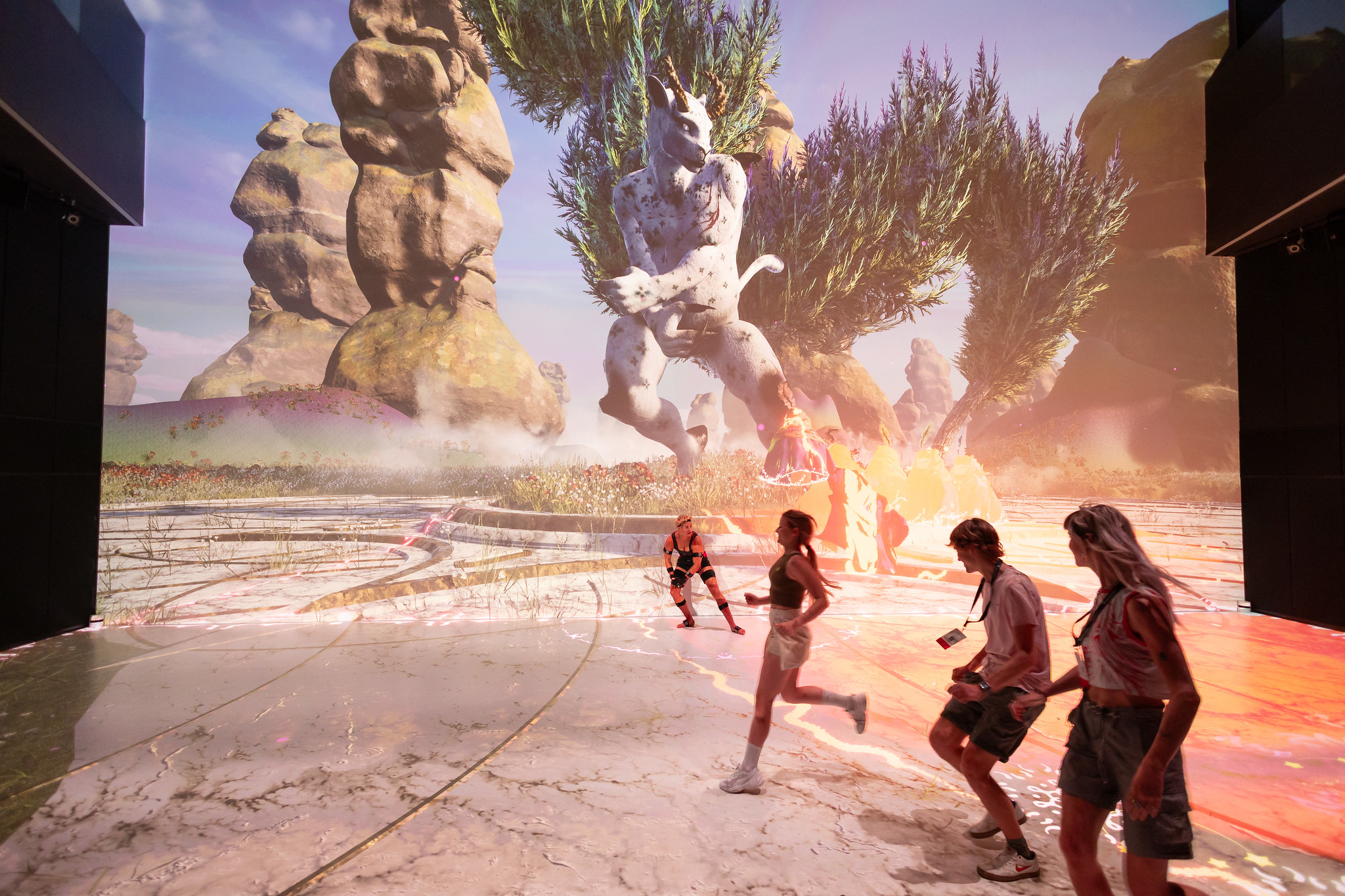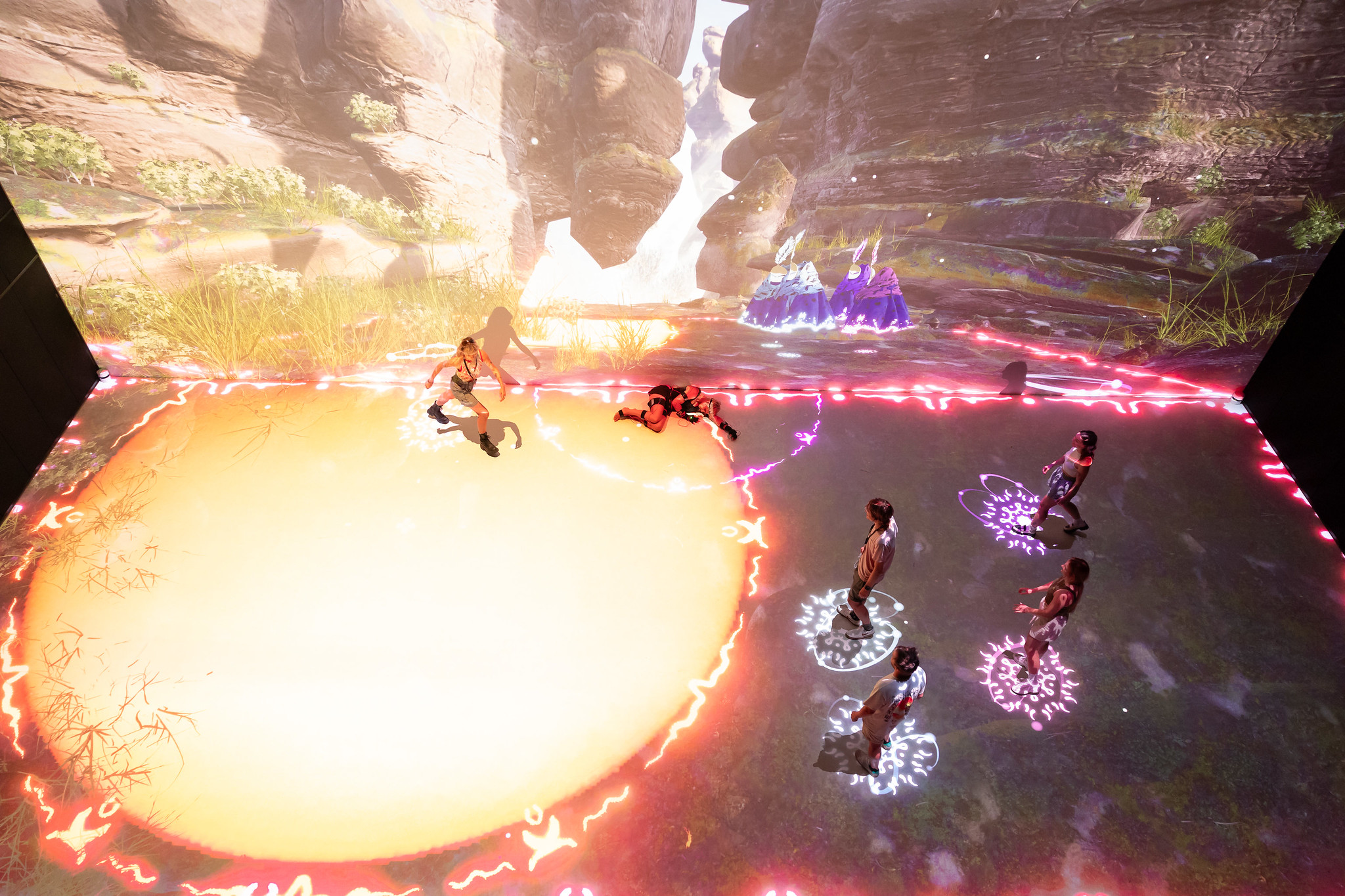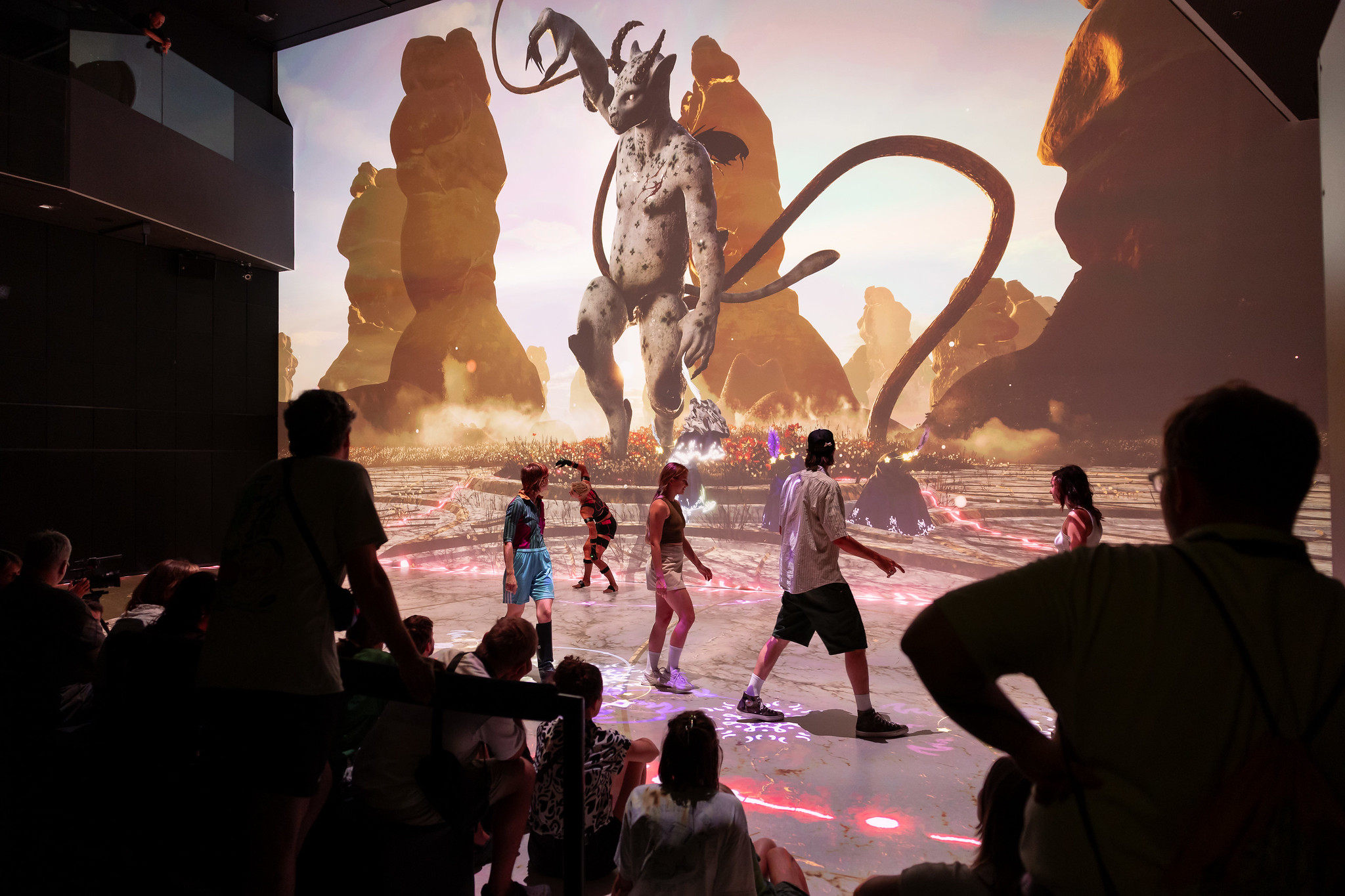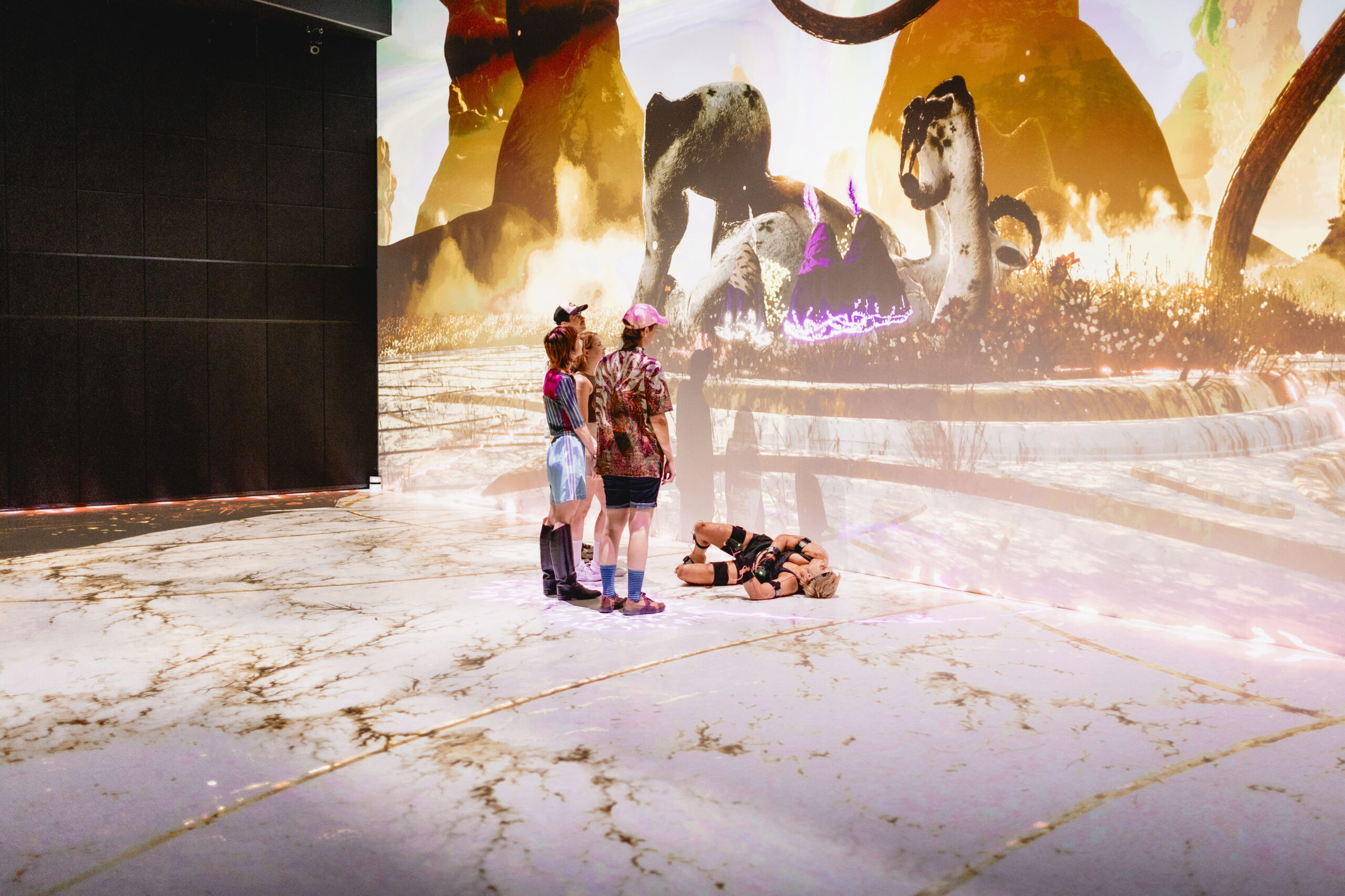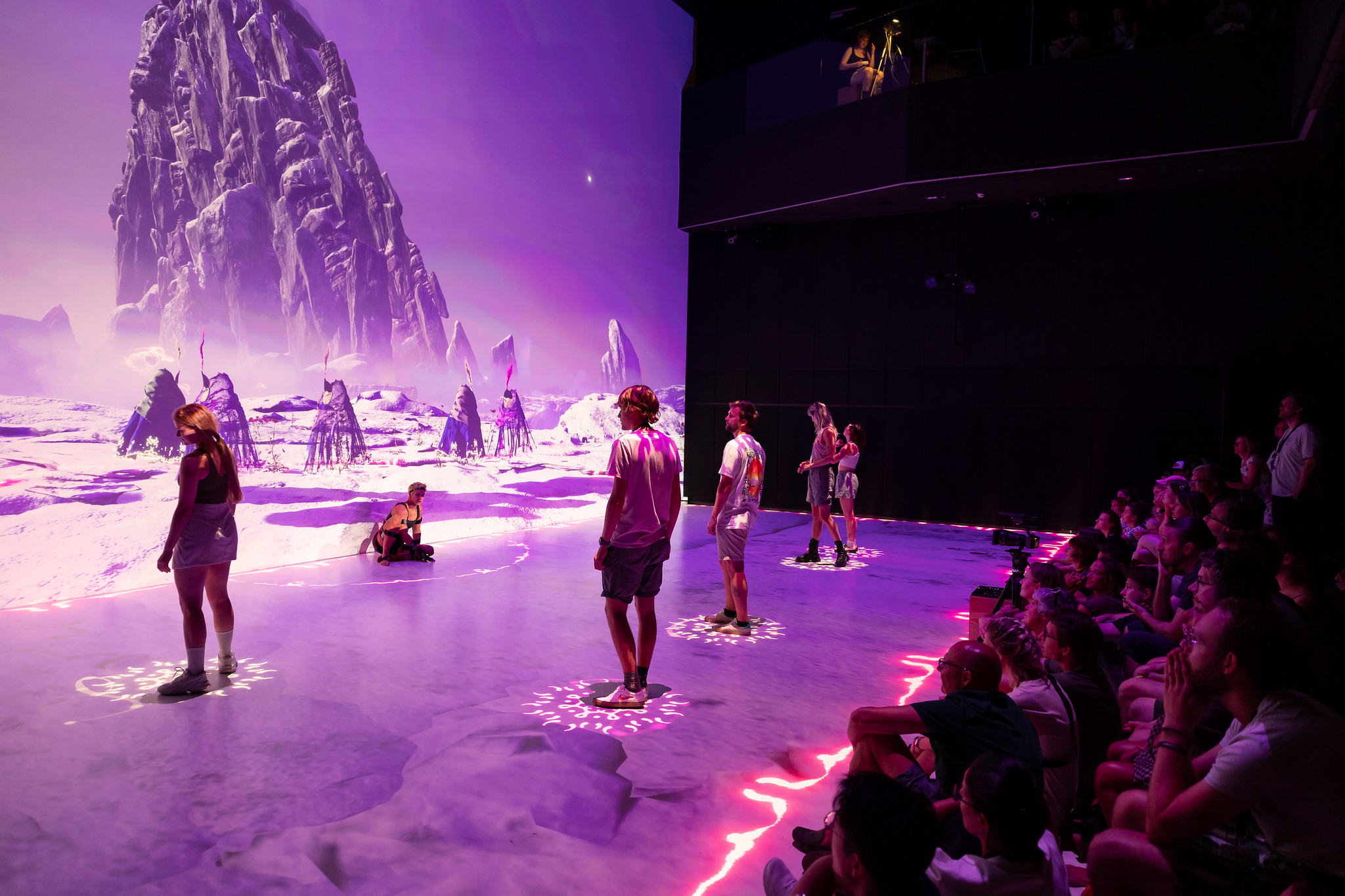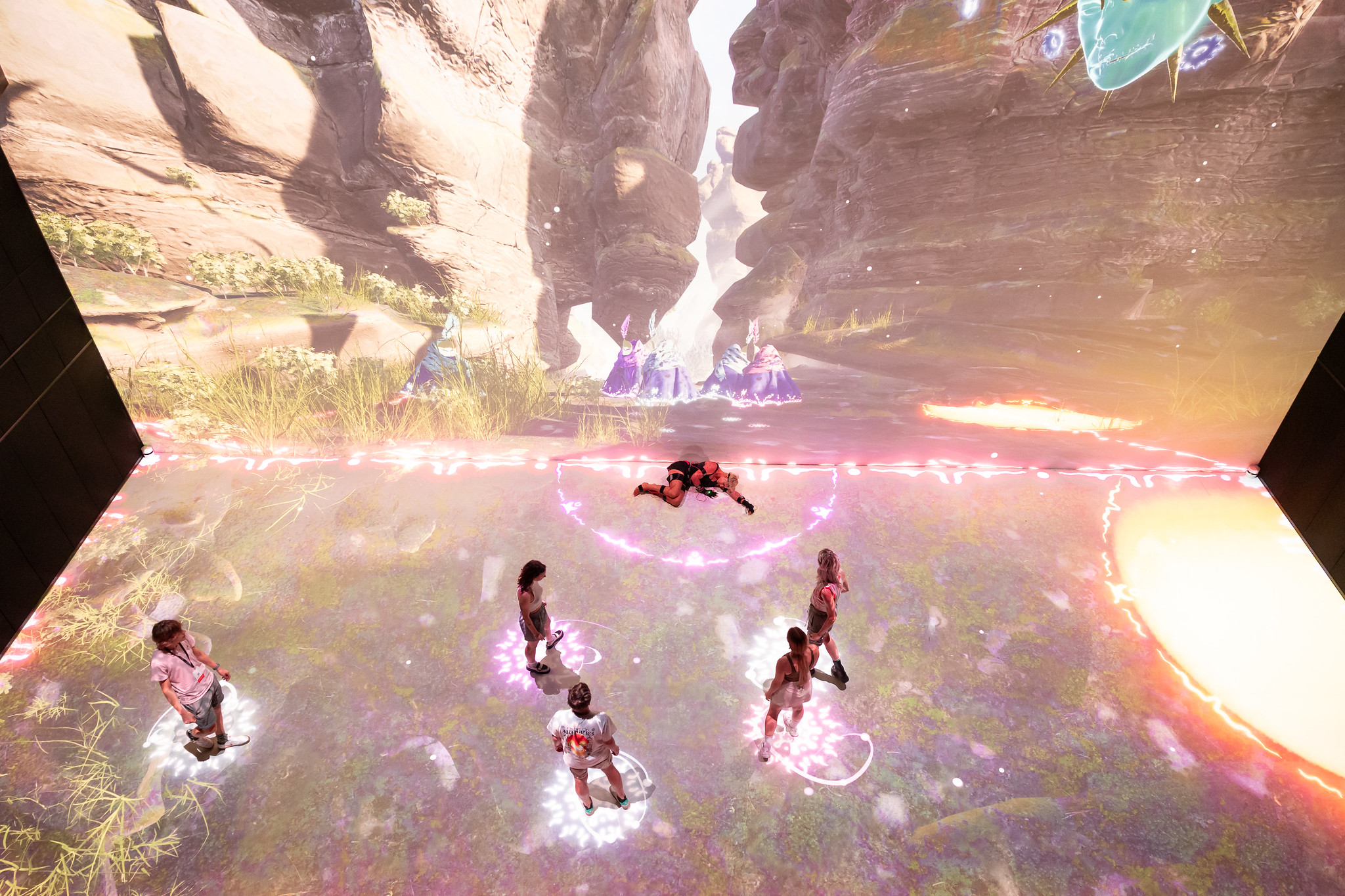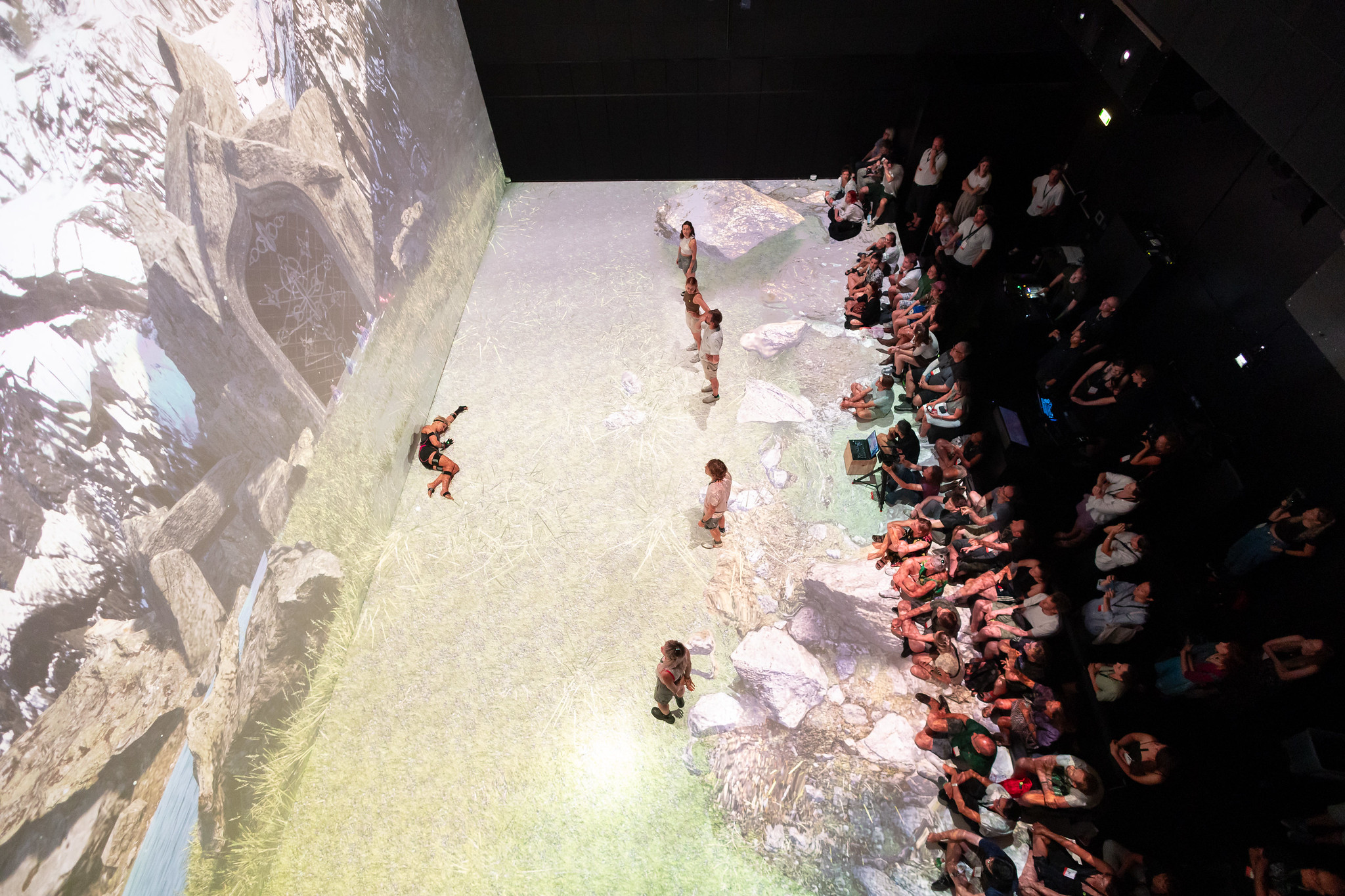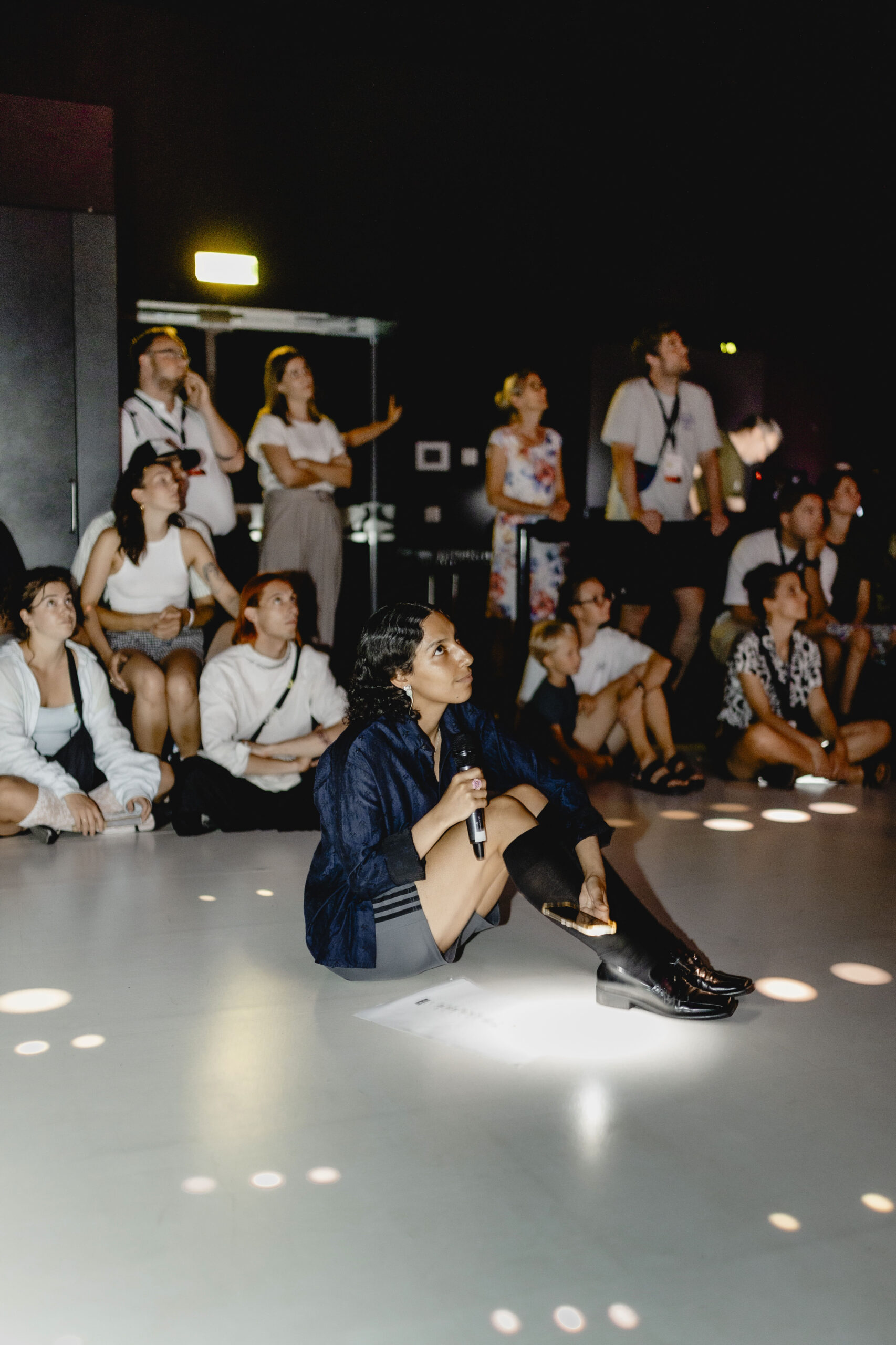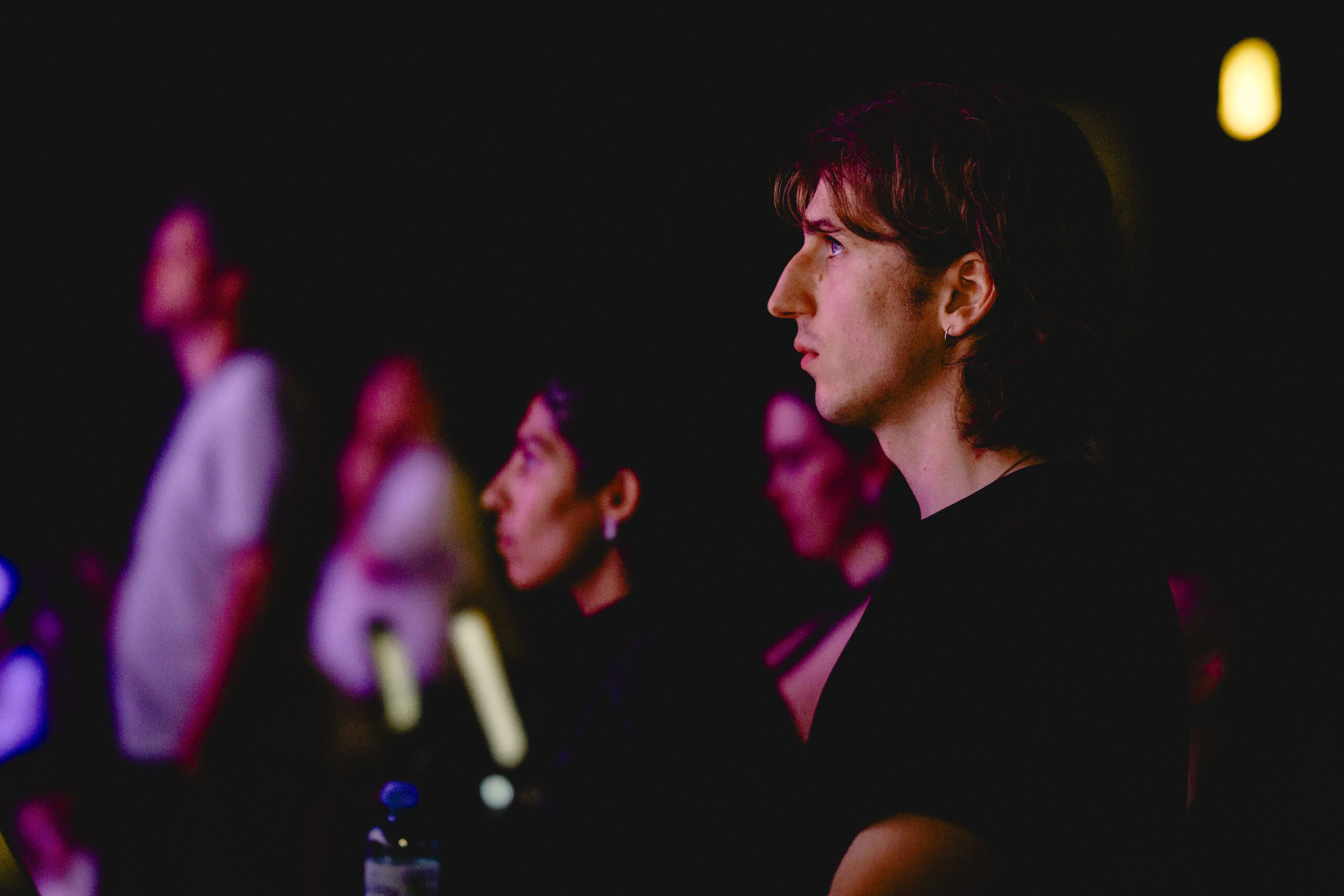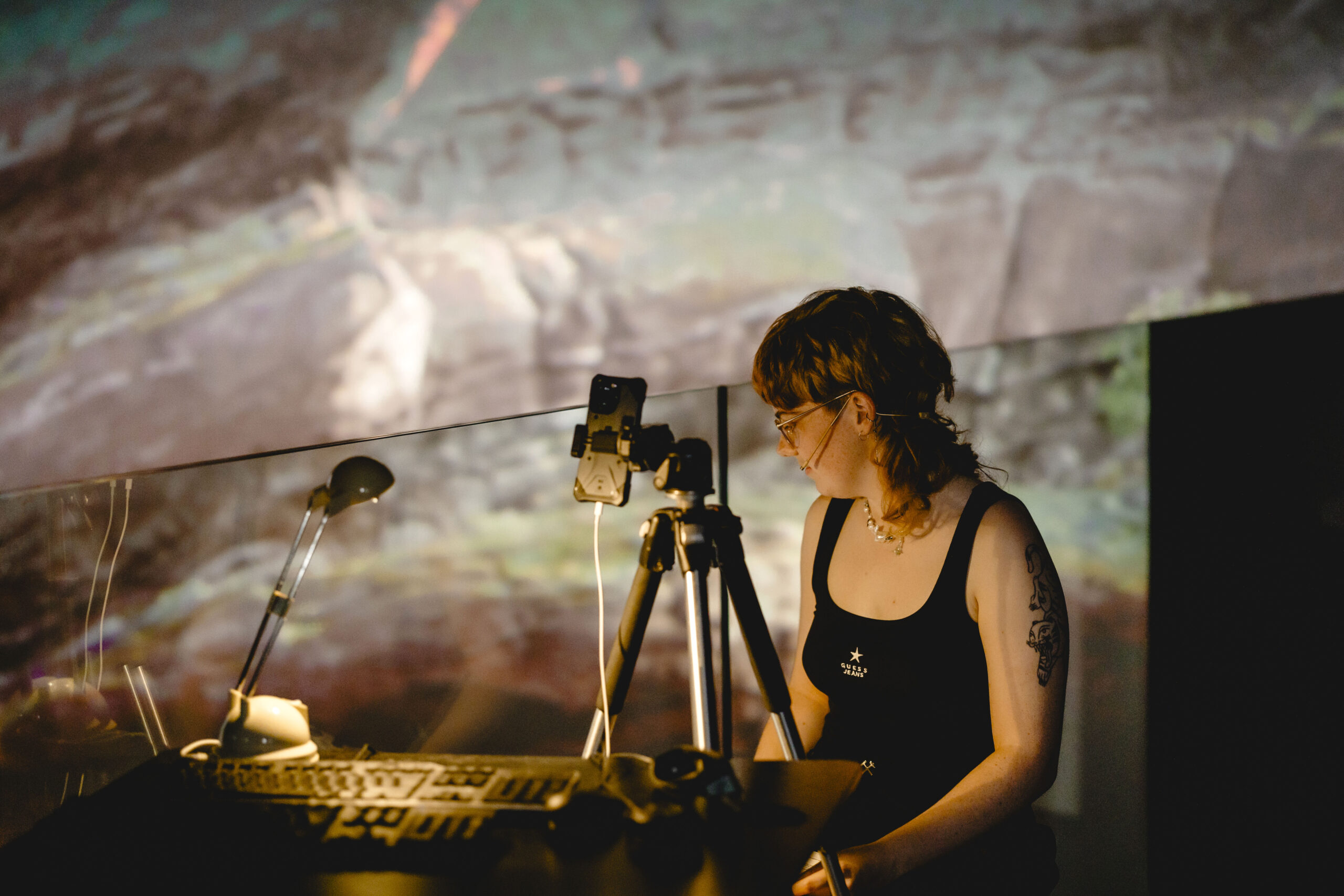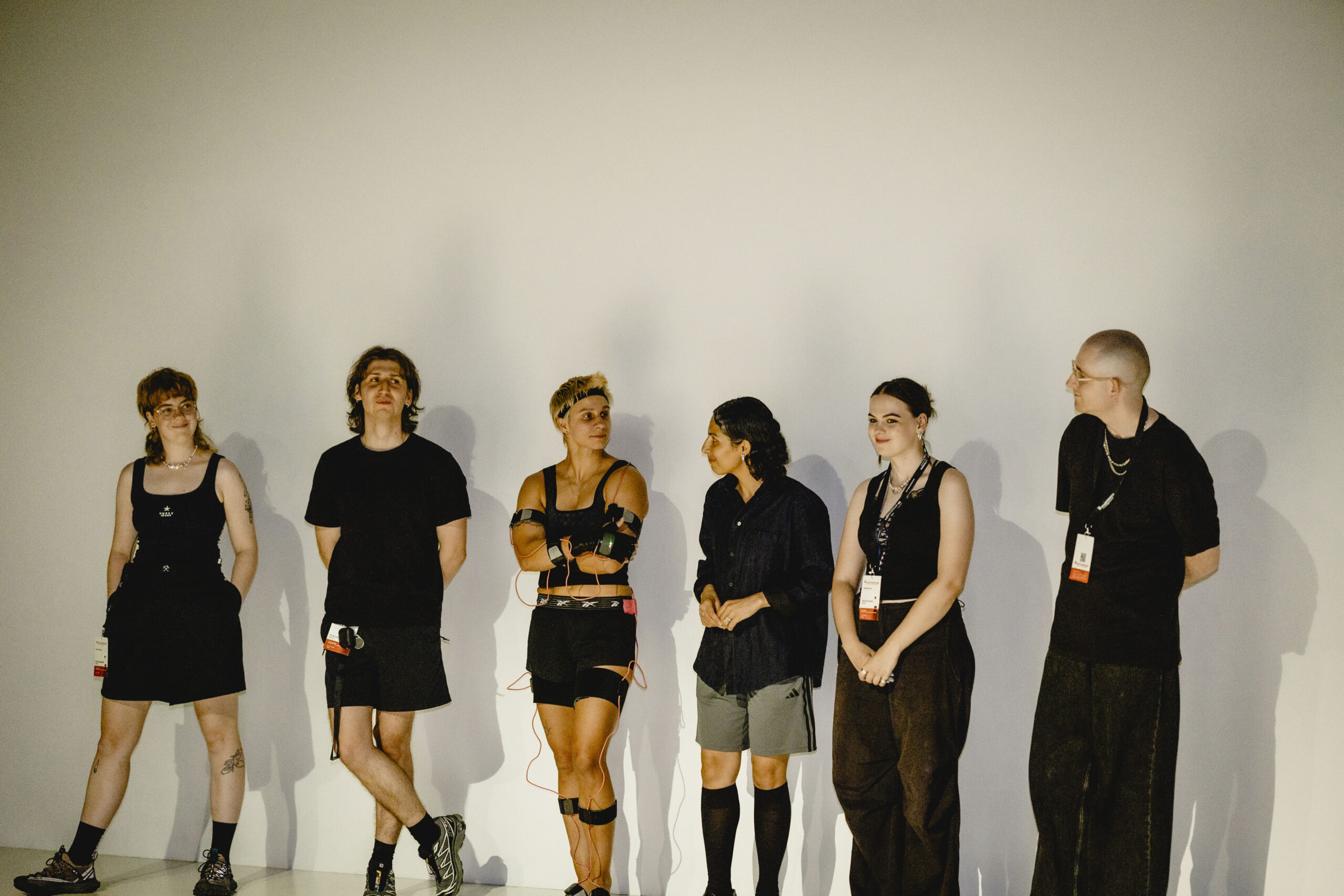State of Play:شهر بازی by artists Tara Habibzadeh, Harriet Davey, and Mati Bratkowski, is a game-based participative art performance referencing the 7 Labors of Rostam in the long epic poem Shahnameh by Abul-Qâsem Ferdowsi Tusi (Iran, 977–1010 CE). In it, up to 5 audience members reenact the final labour, controlling their avatars of Rostam in Deep Space 8K, using laser tracking. The final stage is a deconstructed fight against a boss, who is brought to life virtually using a motion capture suit.
Supported by the Ars Electronica Futurelab, State of Play:شهر بازی was developed by Tara Habibzadeh, Harriet Davey, and Mati Bratkowski as part of the EU project SHARESPACE. It features music and sound design by snake_case and Himera; during the performances at the Ars Electronica Festival 2024 the boss was portrayed by performer Fran Klein in a motion capture suit.
State of Play:شهر بازی is designed for the immersive experience room Deep Space 8K with 16-by-9-meter wall projection and the equally large floor projection. First, the audience is equipped with a set of storylines through contemporary hand-painted paintings referencing the miniature paintings in Shahnameh. The paintings are narrated with a live voice performance in Farsi, accompanied by English headings on the screen. They lead into the interactive game: The visitors are now motivated by the gamemaster to step into the play area.
Though simple to participate, State of Play:شهر بازی is a multi-layered complex collaboration. It embodies the anti-colonial aspect of the artistic direction in its historical context, structure, and content through methods of deconstructive philosophy. The work honors ancient and indigenous practices of experiencing Asian literature through authentic narration and direction. It is based on a bottom-up approach to game design and technical production, as well as fair redistribution of knowledge and skills.
Built in Unreal Engine, the piece tracks the players using the Futurelab’s pharus laser system: As soon as a person enters the arena, they embody an avatar – “little Rostams”- on screen and can control it simply by walking, running, and jumping in the space. The players must work together in different game levels to survive a barrage from the boss character div-e sepid (white demon), controlled in real time by performer Fran Klein wearing a Rokoko motion capture suit.
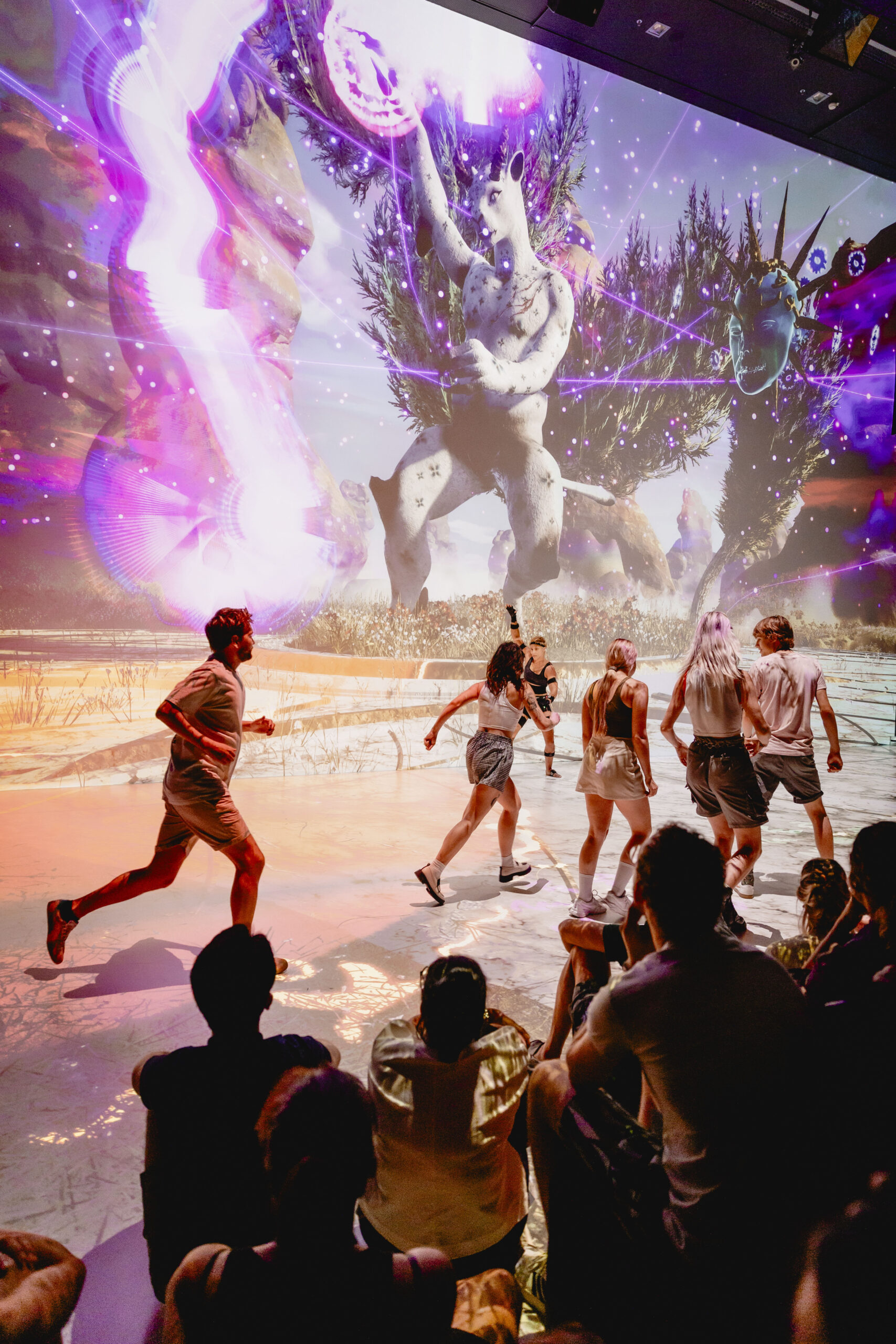
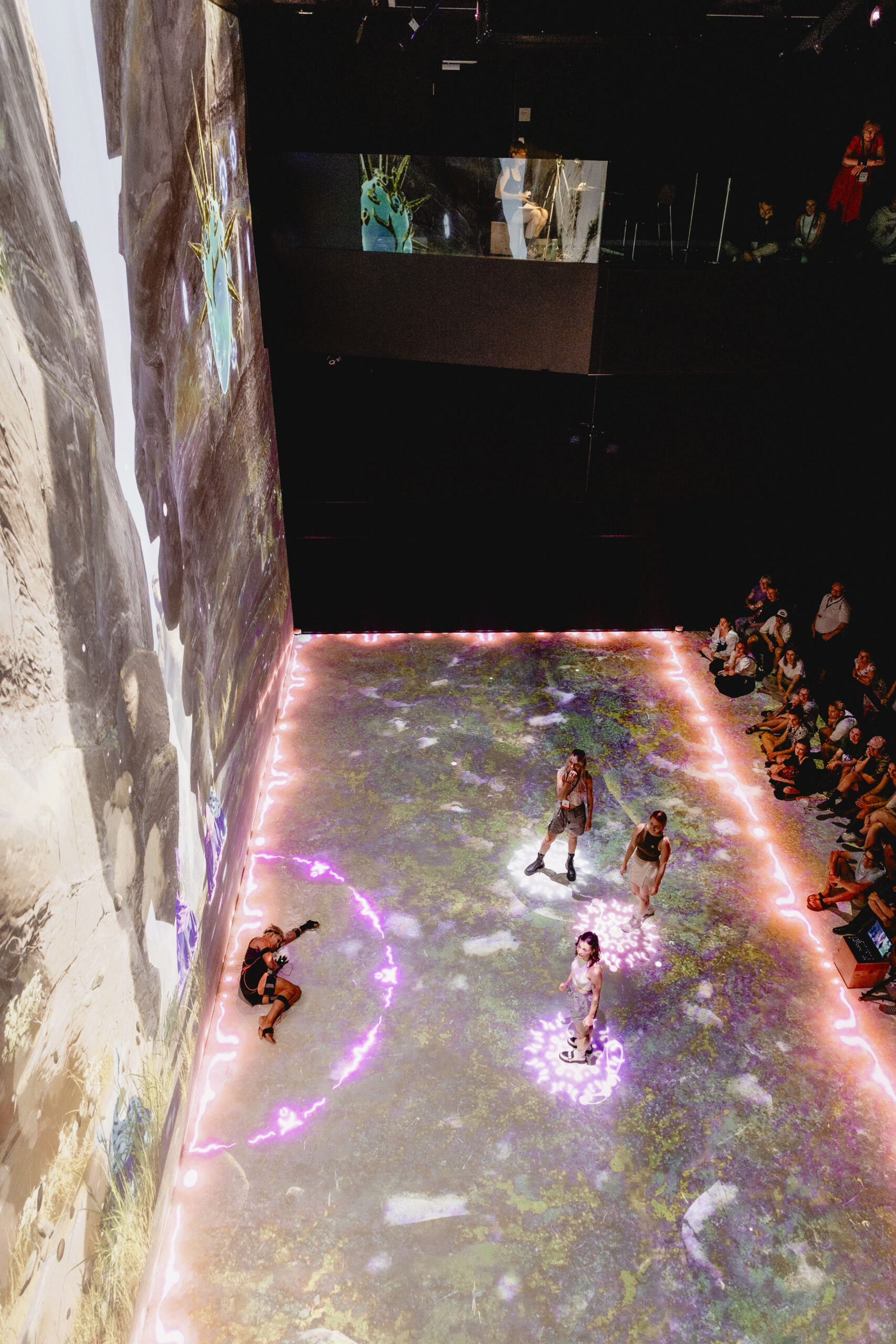
In the first sequence as the performer lifts their left, right, or both hands, a variety of attacks is triggered. In the second sequence, players must learn new avoidance mechanisms to dodge a freezing gaze. In the final sequence, the players must realise that the healing mechanic they have been able to use on each other can now be turned towards the boss to heal him, therefore ending the playthrough.
A live performance with narration by a gamemaster is captured and portrayed on screen – coaxing and guiding the players through their journey, helping them learn the mechanics and interactions available to them. Using the apps Live Link Face by Epic Games and Unreal Engine’s MetaHuman to drive the performance, it functions similarly to a friendly gamemaster in a tabletop roleplaying game. The piece finishes with an ambivalent and open end, aiming to activate intellectual and spiritual participation, additional to the bodily one.
State of Play:شهر بازی is the result of a 10-month-long research, production, and exhibition collaboration by Habibzadeh, Davey, and Bratkowski – supported by the Ars Electronica Futurelab. It was presented at the Ars Electronica Festival 2024, featuring Duo Composer/Sound Designer snake_case (Imogen Davey and Callum Murray), Body and Movement Artist Fran Klein, and Musician Himera.
State of Play:شهر بازی was developed as part of the artistic exploration of the European R&D consortium SHARESPACE that involves 14 partners from eight different countries, including the Ars Electronica Futurelab. The main goal of SHARESPACE is bringing extended reality (XR) to an ethically sound level of presence and sociality by furthering the possibilities of interaction in a virtual space using avatars.
Credits
Artists: Tara Habibzadeh, Harriet Davey, Mati Bratkowski
Supporting Artists: Fran Klein, snake_case (Imogen Davey and Callum Murray), Himera
Ars Electronica Futurelab: Roland Haring, Daniel Rammer, Cyntha Wieringa
This work has been developed in the framework of the SHARESPACE project.
SHARESPACE has received funding from the European Union’s Horizon Europe research and innovation programme under grant agreement No 10192889.
